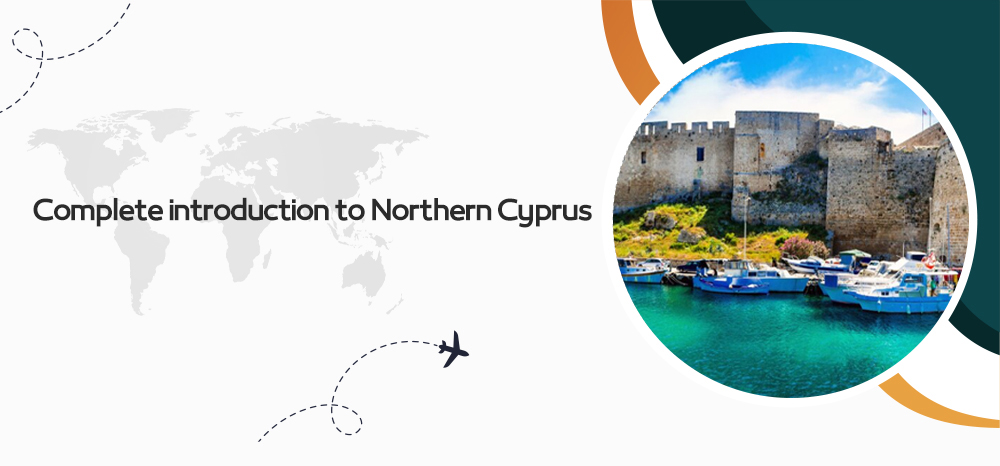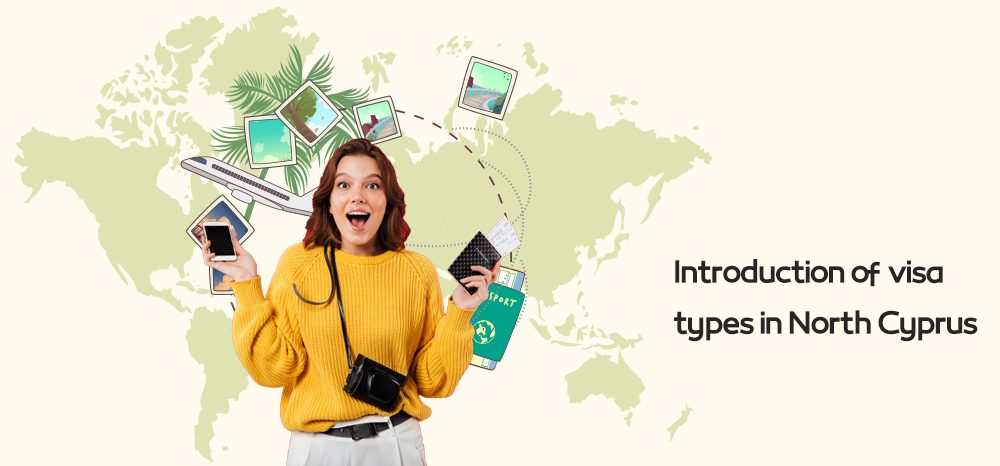Complete introduction to Northern Cyprus

Northern Cyprus is an island in the eastern Mediterranean Sea; This island is located between the three continents of Asia, Europe and Africa.
Northern Cyprus has an area of 3,355 square kilometers (1,295 sq mi), which makes up about a third of the island. 75 km north of Northern Cyprus, Türkiye and Syria are located 97 km east of Cyprus.
In the north of the island of Dipkarpaz, Guzliort extends in the west and Akinjilar in the south. There is a UN-controlled buffer zone between the Turkish Republic of Northern Cyprus and the Republic of Cyprus.
important areas of Cyprus; The capital is Nicosia, Kyrenia, Famagusta, Guzliort and Iskeleh. Due to the Mediterranean climate, this island does not have much rainfall. It is generally hot and dry.
The coastal beaches of Cyprus have been visited by turtles Chelonia mydas and Caretta Caretta for about one hundred million years. These creatures come to the beaches of the Turkish Republic of Northern Cyprus to spawn between May and August. There are also natural caves in the north of the island. There are about 85 natural caves, including Ingerli Cave with its stalactites and stalagmites and Sutonlo Cave in Inuno.
North Cyprus is governed by a multi-party democratic regime. Executive power is exercised by the president and the government. The legislative power belongs to the Republican Parliament.
The president is elected by the people for a period of 5 years. Ersin Tatar has held this position since October 23, 2020.
Administrative structure
Administrative structure of the Turkish Republic of Northern Cyprus and regions of the Turkish Republic of Northern Cyprus The Turkish Republic of Northern Cyprus is administratively divided into six districts (Nicosia, Famagusta, Kyrenia, Gozliort, Iskele and Lefke) and there are 12 sub-districts of this district. Lefkada region has the smallest area and population, the largest population is in Nicosia and the largest region is in Famagusta. There are twenty-eight municipalities as local governments.
tourism
Tourism, which is one of the biggest incomes of Northern Cyprus, has a very good position in this country. The climate of this country provides opportunities for vacations throughout the year. Precipitation is concentrated in December and January, and the average sea temperature is 20 degrees Celsius for more than six months. The Turkish Republic of Northern Cyprus is famous for its wildflowers and the scents of orange, lemon and grapefruit blossoms that fill the air in spring.
The beaches of Northern Cyprus are among the safest and most suitable places for swimming in the Mediterranean Sea. Most holiday resorts have modern swimming pools as well as beautiful beaches for the cool waters of the Eastern Mediterranean.
There are Besh Parmak mountains in the interior of the island, the vast Mesaria plain, Arjan Airport and the country’s capital, Nicosia, in the south. The historical center of the city of Nicosia is surrounded by a city wall 5.5 kilometers long and this wall is still intact. The entrance was built by the Ottomans. Along the east coast lies the historic and developed city of Famagusta and the ancient city of Salamis next to it. Karpaz Peninsula, the largest peninsula of the island, is the nesting place of green turtles. This is a private area and entry and exit are prohibited.
On October 8, 2020, part of the closed part of Marash, known as the buffer zone, was opened to tourists and locals.
The population of Northern Cyprus consists of two main groups: local Turkish Cypriots and immigrants. Apart from these groups, a small number of Greeks and Maronites (Maroni in the Cypriot dialect) live in the village of Dipkarpaz in the east and in the villages of Korucham (Kormasit) and Karpasha in the north. Latin Muslims call this island “Linobamuaki”.
language
The official language is Turkish. However, the majority of Cypriots are fluent in English.
religion
Various sources state that the rate of Muslim population in the Turkish Republic of Northern Cyprus is between 98.71% and 99%. It has been said that 0.5% of the people are Orthodox Christians, 0.2% are Maronite Christians and the rest have other religious beliefs.
The Muslim population traditionally adheres to the Hanafi sect of Sunni religion. There is an Alevi minority in the Turkish Republic of Northern Cyprus.
There are also Orthodox Greeks and Catholic Maronites who make up a very small part of the population.
Turkish Cypriots have been described as one of the most secular societies in the Islamic world. According to a global study conducted in 2006 called Global Values Survey, 75% of Turkish Cypriots stated that God is very important in their lives. This rate for Greek Cypriots was 91%. Visiting places of worship such as mosques and churches is not common among Turkish Cypriots and is observed at a lower rate compared to Greek Cypriots.










